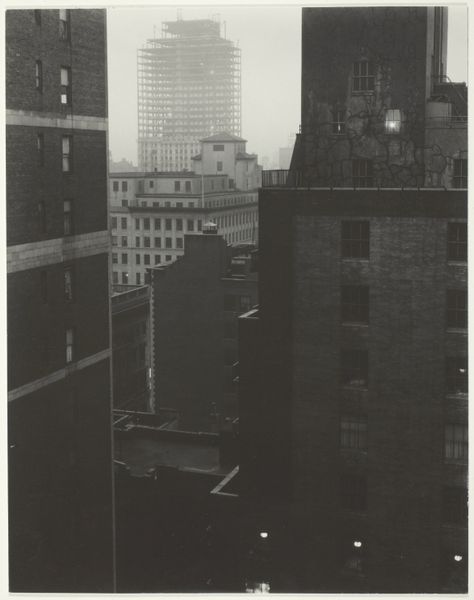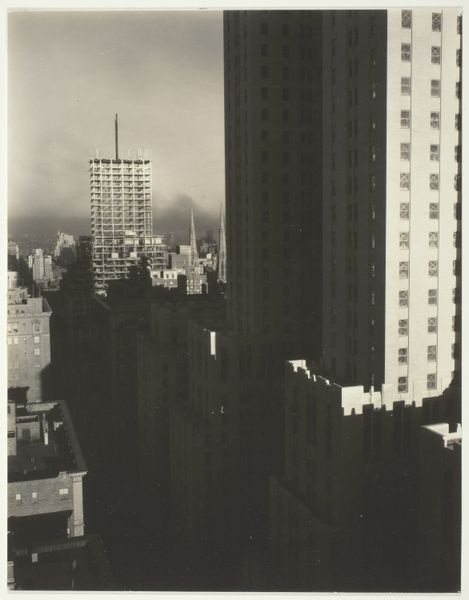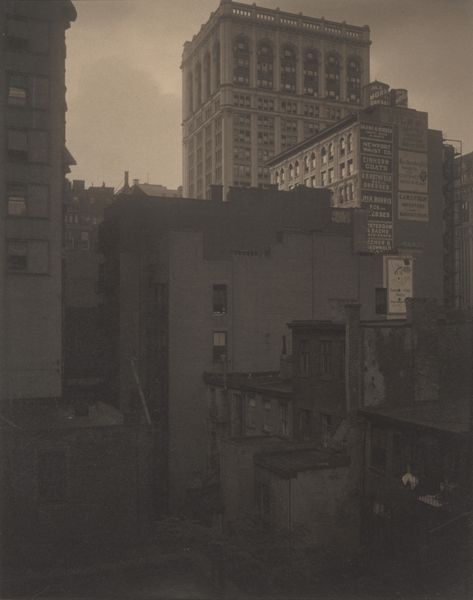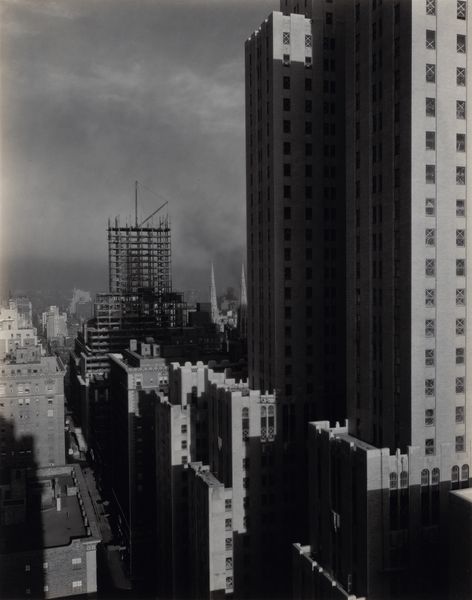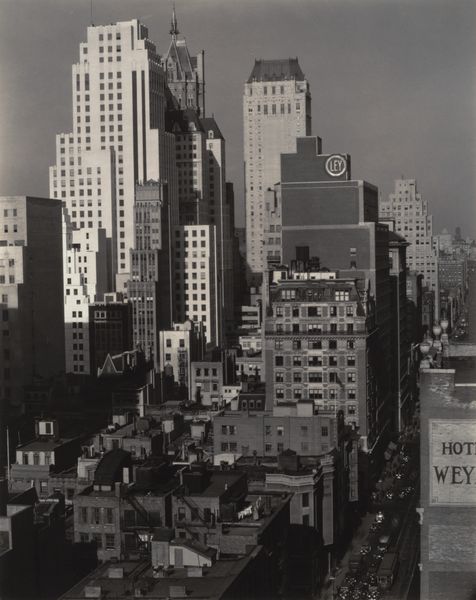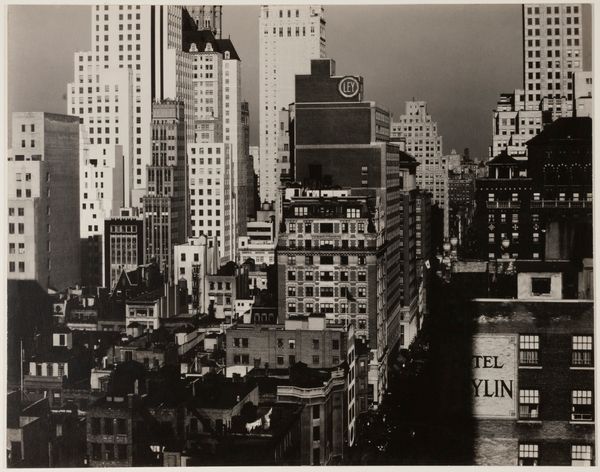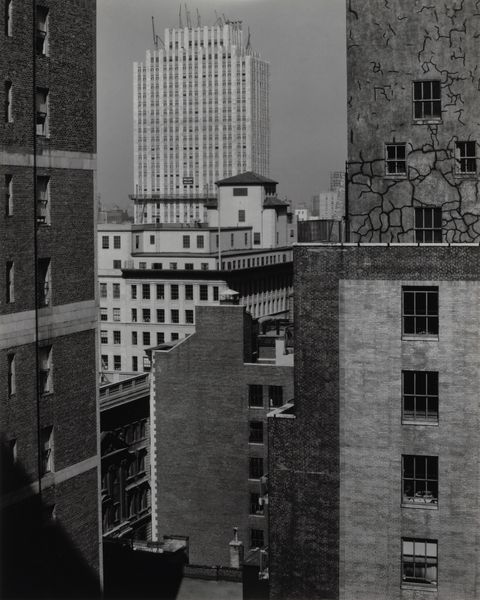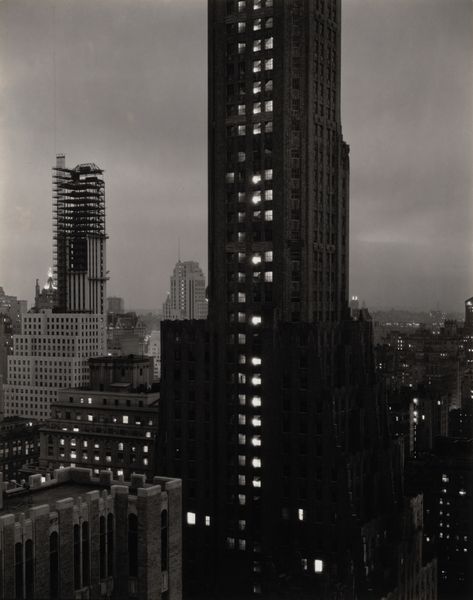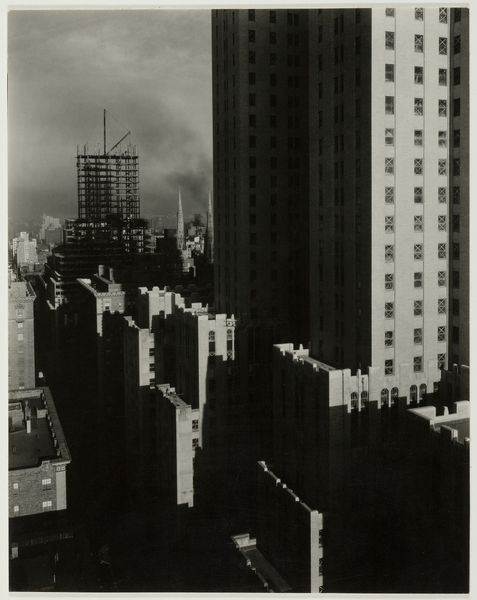
photography, gelatin-silver-print
#
precisionism
#
landscape
#
photography
#
geometric
#
gelatin-silver-print
#
monochrome photography
#
cityscape
#
monochrome
#
modernism
#
monochrome
Dimensions: sheet (trimmed to image): 24.3 × 19.1 cm (9 9/16 × 7 1/2 in.) mount: 54.7 × 42 cm (21 9/16 × 16 9/16 in.)
Copyright: National Gallery of Art: CC0 1.0
Editor: Alfred Stieglitz captured this gelatin-silver print in 1932, titled *From My Window at An American Place, Southwest.* It's striking how the geometry of the buildings is laid out in almost clinical monochrome tones, but there’s a strange softness to it all the same. What symbolic narratives do you find woven into this stark cityscape? Curator: The high vantage point speaks volumes, doesn't it? Dominance, observation… Stieglitz gives us a carefully framed reality. That unfinished skyscraper, shrouded in haze, looms large – a symbol pregnant with meaning. What might that skeleton of steel and concrete represent to you? Editor: Possibly aspiration and ambition, but also the fragility of progress itself. Curator: Precisely! Consider this image alongside other Precisionist works of the period. They frequently employed urban and industrial motifs to examine the modern human condition. But, in this photograph, the natural light softens the scene, creating a beautiful dance between structure and form. It almost feels like a romantic symbol-- the modern world in diaphanous terms, with the building an expression of psychological longing for permanence. Editor: So it’s both a record of a specific place and time and also, perhaps, something timeless, universal even? Curator: Absolutely. The cultural memory embedded here goes beyond just architectural documentation. There's a dialogue between permanence and ephemerality. Does the contrast shift your initial feelings on the image? Editor: It does, definitely. I now see how deeply personal a photograph like this could be, and it carries much broader implications. Curator: Indeed, seeing isn't passive, it is always an active construction, as we can observe from Stieglitz's photograph.
Comments
No comments
Be the first to comment and join the conversation on the ultimate creative platform.

